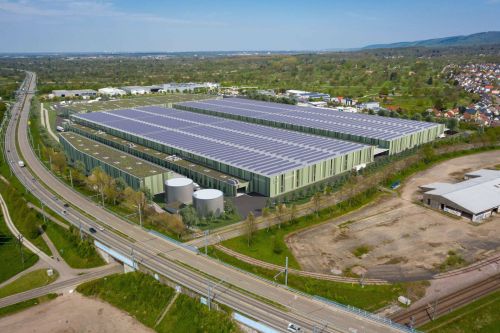Construction under the cosh
Stock market reportThe likelihood of a trade war between the US and China, as well as between the US and the EU, has been putting something of a damper on investor activity, despite the promising growth forecasts. The S&P500 index in the US approached its record level of early 2018, while the moods on the European stock exchanges also improved, although the signals were more mixed here, an indication of the differences in the economic condition of individual eurozone countries. The US economy continues to flourish (with growth of more than 4 pct in Q2, the highest in four years), so unsurprisingly the markets are expecting a response from the Fed, which, however, will not stop the growth for now. The political tension in Europe has also noticeably weakened during the summer holiday period. The prospect of a trade war remains a source of concern, although there has been an improvement in the relations between the EU and the US, which have at least declared a willingness to maintain zero tariffs on most products and suspend duties on steel and aluminium. So it looks like tariffs will only be imposed between the US and China. A new danger surfaced in August for the emerging markets, just as they were benefiting from the good economic climate – the situation in Turkey. The depreciation of the Turkish lira and the pronouncements of the Turkish leader Recep Erdoğan that there is no need for external assistance (the International Monetary Fund often intervenes in such cases) were incomprehensible to investors, worsening the sentiment in emerging markets and strengthening the dollar (the złoty has been at its the weakest for a year). Turkish turbulence represents a huge risk for Europe – it is a country that was preparing for potential EU integration until recently, and so economic ties are strong and the turbulence of the Turkish economy will clearly have an impact, for instance, on the European banks. And it has certainly not been helping to improve the mood around emerging markets. The best example was the decline of the WIG on Friday, August 10th – the first day of the Turkish crisis, which amounted to more than 3.5 pct, wiping out the gains for the whole week. Nonetheless, the balance for July and the first week or so of August seemed favourable for the WSE. The increases of more than 4 pct on the WIG and WIG20 indices allowed it to approach its May level (60,000 points and 2,300 points respectively).
This all stemmed from the excellent economic forecasts, companies’ good Q2 results and the hope that the announced employee capital plans programme [PPK] could be entering the parliamentary debate stage and possibly come into force in summer 2019. Market players believe that this new instrument will boost activity on the Warsaw Stock Exchange and fill the gap left by open pension funds in terms of generating demand. The construction companies’ index looked particularly weak against the background of the major indexes. It is apparent that the market is afraid of a repeat of the sector’s troubles six years ago when it was hit by a wave of bankruptcies. Theoretically, based on data from the Central Statistical Office [GUS], the economic climate in the construction sector should be healthy – production is growing (by 25 pct in H1) – but barriers are increasing, which GUS also points to as an indication of the climate in the sector as well as its low profitability (less than 1 pct in H1 2018). The labour shortages (the sector needs up to 150,000 people) as well as the rising prices of building materials (concrete, steel, asphalt and oil) have combined to knock the construction sector off its perch as the analysts’ favourite. The best confirmation of this phenomenon are Budimex’s results, which revealed a fall in profits of 41 pct, mainly due to the construction segment. However, in a comparison of profitability ratios, Budimex has been performing better than the market average. In H1 the increase in the number of bankruptcies amounted to an estimated 18 pct across the entire construction sector, while its debt reached around PLN 2.41 bln (PLN 200 mln more than last year and PLN 1 bln more than in 2016). Some representatives of the sector have been speaking more urgently about the need for state assistance, based on an index of the prices of materials and the labour necessary for the construction of public projects. In this situation it is difficult to highlight any examples of companies that have been tempting to investors recently.
Some signs of unease can also be seen among residential developers. According to market reports, the growth in apartment sales tailed off in H1. Added to this, stock market investors have been swayed in their decisions by the dividend payment period, which happened to involve some very generous pay-outs. The residential segment paid out more than PLN 0.6 bln from its 2017 profits. However, despite the weaker sales results, according to transaction market analysts home prices grew in H1, so residential developers’ profits should actually receive a boost. ν (Mir)
Warsaw at the forefront
The Polish stock market led the way in terms of growth in the region in July. The BUX in Hungary gained 3 pct, whereas the PX in Prague lost ground by almost 2 pct as investors in the Czech Republic declined to join in with the share purchases in emerging markets. All three indices reacted in identical fashion to the crisis in Turkey, registering declines of a few percent.





















































